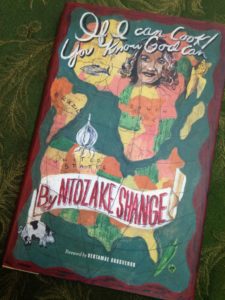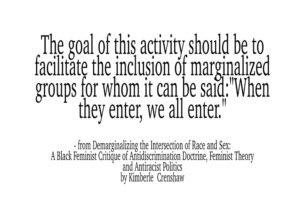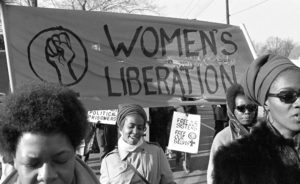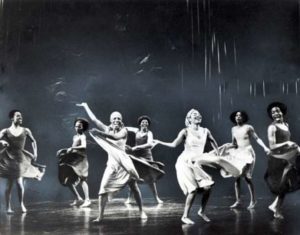The first chapter of If I Can Cook/ You Know God Can gave me some things to think about; like about the varying degrees to which holidays carry meaning for different people. This is something I have never really thought about. It had never occurred to me before that holidays that get the most attention and deference are not for everyone (no holiday is). Placing value on one set of traditions A. creates the expectation that everyone else will feel the same about those traditions and B. that those traditions are somehow superior or more important than any others. This could be incredibly demoralizing to anyone who does not subscribe to those traditions and/or their value-systems.
This makes me think about nationally-recognized holidays. How does that work? Who is deciding what should be recognized as a national holiday? Like… thanksgiving?? I do love cranberry sauce on turkey, but why do we eat it on thanksgiving? And WAY more importantly, WHY do we get a week (or about a week) off for thanksgiving? That week off says “this holiday is important and should be celebrated” and as we know Thanksgiving has some devastating and violent baggage attached to it.
That all being said, for those who might be ignored or harmed by the observation of certain national holidays, there is great pride and strength to be found in reclaiming holidays. As Shange writes in If I Can Cook/You Know God Can: “And so, black-eyed peas and rice or “Hoppin’ John,” even collard greens and pig’s feet, are not so much arbitrary predilections of the “nigra” as they are symbolic defiance; we shall celebrate ourselves on a day of our choosing in honor of those events and souls who are an honor to us.”(7) I think this quote gets to heart of what If I Can Cook is about. Shange is celebrating her traditions, her loved ones’ traditions, and the traditions of the African Diaspora, by exploring the stories behind these recipes she gives them recognition that that they do not get from, for example, the united states government.
Additionally, by documenting these recipes and their stories, she is creating a record for future generations to refer to in order to understand, and establish their traditions. Holidays such as Christmas, Hanukkah, Thanksgiving, and easter are often discussed or taught in American schools, meanwhile hundreds, probably thousands of holidays which may be practiced/observed by students in an American classroom, are not taught.
The same principle is at work in chapter one when she cooks a traditional New Year’s Eve meal for her daughter. She is giving her daughter a solid ground to stand on, an assurance that someone came before her, and by carrying on their traditions she is supported by them. Lots people in America don’t necessarily have to think about this dynamic. People who unquestioningly subscribe to the holidays and traditions observed by the government, by those currently in power, are given this support. They don’t have to look for it. Some might say, who cares? It’s just a silly matter of holidays and when school is out for winter break. But, as Shange seems to get at in “What’d You People Call That?” the human soul is fed by traditions and history. She says, “Though I ate alone that New Year’s Eve, I knew a calm I must attribute to the satisfaction of my ancestors. I tried to feed us.”(9) She is feeding her daughter’s soul now, and giving her means to feed it for years to come. Something she might not be given otherwise, or may not discover for many years. What a gift to give your daughter!
Below I’ve listed two Wikipedia pages that I make me realize how many different holidays, which many of which are likely practiced by people in America, are ignored by the designation of Christmas, Thanksgiving, Easter etc. as national holidays.
https://en.wikipedia.org/wiki/United_States_immigration_statistics






